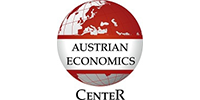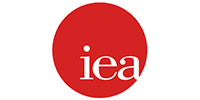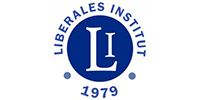A fiscal time bomb: How the big beautiful bill threatens the U.S. economy
We are pleased to announce a new collaboration between the Institute for Research in Economic and Fiscal Issues (IREF) and the European Center for Austrian Economics Foundation (ECAEF), focused on publishing a series of articles on economic and fiscal topics. It emphasizes our commitment to independent thought, academic freedom, and critical inquiry.
On July 4, 2025, President Trump signed the “One Big Beautiful Bill Act” (OBBBA) into law—a sweeping package of tax cuts and federal spending presented as a patriotic revival of American industry and innovation. While the legislation contains a few pro-growth measures, it is ultimately weighed down by costly, politically motivated subsidies and tax breaks that complicate the tax code and jeopardize the nation’s fiscal health and economic future.
Even some of the president’s old allies have raised serious concerns. Fiscal conservatives like Representative Thomas Massie and tech entrepreneur Elon Musk have publicly criticized the bill—Musk went so far as to call it “a disgusting abomination,” sparking heightened tensions with Trump and exposing cracks in his base.
Instead of strengthening the economy, the OBBBA prioritizes short-term political gains over sound economic policy, undermining the market dynamism and fiscal discipline that have historically fueled American prosperity.
Why the OBBBA is a fiscal time bomb, rather than a roadmap for growth
At first glance, the OBBBA appears to deliver sweeping tax relief for American households and businesses. It extends key parts of the 2017 Tax Cuts and Jobs Act—originally set to expire in 2025—sparing millions from looming tax hikes. But a closer look reveals a more troubling picture. It is a costly, confusing, and regressive law. It favours certain groups, distorts the tax code, and adds trillions to the national debt.
The core issue with the OBBBA isn’t tax relief—tax cuts are always a welcome and pro-growth tool—but its sheer fiscal recklessness. The bill slashes federal revenues by an estimated $5 trillion over the next decade without serious spending restraint. Under a realistic scenario—$1.1 trillion in tax cuts and a projected total long-run GDP increase of 1.2% as a result of the OBBBA—the bill would still add $4 trillion to the deficit. Factoring in delayed reforms, extended tax cuts, and the costs of large-scale deportation policies, the actual fiscal burden could exceed $6 trillion.
Fiscal irresponsibility is compounded by the bill’s failure to deliver true reform. Instead of simplifying the tax code as promised, the OBBBA adds more complexity through new exemptions, deductions, and confusing phase-outs that undermine tax neutrality. Overtime pay, tips, auto loan interest, and retiree benefits now come with complicated rules and income thresholds.
Take the much-publicized tip exemption: while it claims to make tips tax-free, only certain types under specific conditions qualify, leaving workers and employers unsure of what applies. A restaurant server might benefit, but a cook earning a similar wage might not, which could lead to inconsistencies.
Compounding the issue is the distributional impact of the bill. Households earning $460,000 to $1.1 million would receive an average tax cut of $21,000 (4.4% of after-tax income), compared to $1,800 (2.3%) for middle earners and just $150 (less than 1%) for low earners. The problem isn’t that high earners get sizable cuts—capital and entrepreneurship thrive when individuals retain more of what they earn—but that the bill leaves intact a distorted, progressive tax code that penalizes productivity and skews incentives. A single flat rate would end these distortions, simplify compliance, and treat everyone equally.
Moreover, these figures do not account for cuts to Medicaid and food assistance, which Yale’s Budget Lab estimates could reduce the disposable income of the poorest households by up to $600 annually. To be clear, the issue isn’t with cutting inefficient welfare programs—eliminating wasteful spending is a positive step. But the OBBBA fails to pair these cuts with pro-market reforms. Without complementary measures like healthcare deregulation, licensing liberalization, or expanded private safety nets, the bill shifts the burden onto the most vulnerable without offering a path upward.
The situation is even more alarming if one considers Trump’s heavy-handed protectionist agenda. New tariffs on foreign goods act as hidden taxes, costing working-class families an average of $2,300 a year. These added expenses wipe out most families’ modest tax savings. More troubling, the tariffs undermine the bill’s own economic goals. With the Section 232 copper tariffs now in effect, models project that the tariffs imposed would reduce long-run GDP by 0.8%. What was sold as pro-growth policy is starting to look like a self-inflicted economic setback.
The fiscal picture is equally troubling. The bill puts the nation on a risky financial course. Interest payments alone could exceed $1.8 trillion over the next decade—more than current spending on defense or Medicaid. Annual deficits are expected to average around 7% of GDP, while public debt is projected to rise by 5.3% of GDP or $2.2 trillion by 2029.
For context, America’s total debt has surged to a record $37 trillion, far outpacing pre-pandemic forecasts and creating an urgent fiscal challenge. The Congressional Budget Office had forecast in January 2020 that gross federal debt would not reach this level until after fiscal year 2030—a stark warning that America’s debt path is moving far faster than anyone anticipated.
This mounting debt not only crowds out private investment and weakens America’s ability to respond to crises, but it also risks fueling inflation. This hidden tax steadily erodes wages, savings, and purchasing power, forcing ordinary Americans to bear the cost in their daily lives.
Conclusion
America’s prosperity has long rested on competition, limited government, and fiscal responsibility. The One Big Beautiful Bill abandons these principles, offering short-term relief at the cost of long-term harm. Without decisive course correction, its legacy will be a weaker economy burdened by unsustainable debt, limiting opportunities for future generations and threatening the very foundation of American prosperity.





























